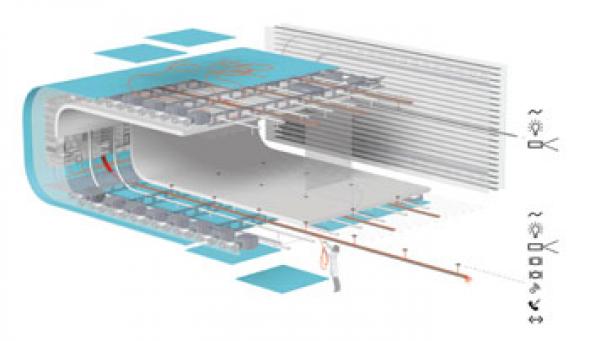Open Source, Closed Eyes
Adam Scrivener reports back from Eyebeam’s Open Source Architecture online discussion forum
For over four weeks, the group Eyebeam hosted a discussion on the net under the title Open Source Architecture. A potentially challenging notion that suggested, paraphrasing Lautréamont, that architecture could be made by all. Unfortunately, this title proved to be merely window dressing for a discussion based around a competition to design Eyebeam’s new gallery space in New York for the purpose of displaying new media art works (‘new media art’ being their term – not mine). As it turned out, the discussion centred on ‘the creation and experience of new media art and architectural space’. Although there is nothing especially problematic about this, the analogy with ‘open source’ was not only misplaced it was willfully misleading since the hosts had no intention of addressing this notion even discursively. The online discussion was divided into four weekly themes: Making; Mediating; Experiencing; and The Future Art Space. The mere fact that there was a presumed and designated space for art said everything.
I am constantly amazed by the continued faith, the expectant hope, and imagined liberation that many attach to new technologies. Also in the way they continually generate meaningless discussions on ‘the real’ versus a ‘virtual’ reality. A lot of chat over the four weeks was utterly valueless, with pseudo-intellectual statements such as: ‘What new media has changed is the viewer’s perception of reality, and the understanding of reality as one mode of existence.’ Or, as someone intoned when the talk turned to the idea of a museum for the display of computer-based art: ‘The surface of the screen is a museum.’ This is not to criticise the site as a whole, some of the discussion on architecture, both in real space and virtual, was interesting. Things got better in the last week, when the moderators seemed to allow longer posts onto the site. In one such post Saul Ostrow invoked McLuhan, mentioning how, as we continue to create new technological extensions such as digital space, these technologies, in turn, colonise us – they order and re-order our understanding of the techniques we have developed. This recursiveness, by means of which technology is recast as second nature, as invisible, ensures its nearly unconscious acceptance. This process of naturalisation causes its transformative potential to recede as it becomes integrated into the status quo.
Therefore, as one wandered through the Eyebeam website, passing through the myriad pop-up windows, unnecessary graphics and introductions, before logging on to the discussion, reading the emails, attempting to send contributions only to have them edited, screened and, in some cases, refused by the Eyebeam team, we were doing more than discussing a piece of architecture, we were moving around one.
The discussion can be found at: [http://www.eyebeam.org/opensourcearchitecture]
Adam Scrivener is a member of Inventory <Inventory@cwcom.net>[http://www.inventory.mcmail.com]
Mute Books Orders
For Mute Books distribution contact Anagram Books
contact@anagrambooks.com
For online purchases visit anagrambooks.com








